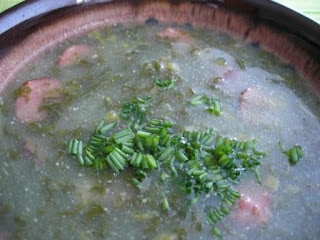 |
| Farmers´ Market |
 |
| Pumpkins in all colours, shapes and sizes |
 |
| Brussels sprouts, winter vegetable |
The produce at farmers market has changed from apricots and strawberries to pumpkins, cabbages, root vegetables, Brussels sprouts, apples and quince. Autumn has arrived and soon will make way for winter. One of the mushroom stands was not even there any more. Winter decoration arrangements have appeared alongside the chrysanthemums. Everything is transitory, everything changes.
 |
| Chrysanthemums bring colour to the autumn market |
 |
| Flower arrangement "Winter is coming" |
The city has changed colours too. People are wearing coats, hats and scarves. And rightly so. When it is cold outside, dress up warmly and everything is fine. That’s the way to survive the winter. The minus temperatures are not too far.
 |
| Colourful Autumn |
 |
| Swiss walnuts - yes, locally grown |
It is good to see that the tourist season continues even though the summer is over. Hearing English from both sides of the Atlantic, Spanish, German… Those visiting the city on a Saturday are lucky to see the busy farmers´ market and try some of the local fruit, apple juice, cheeses or pastry.
I love potatoes in every season, but now some oven baked potatoes just feel right as a great tasting source of energy.
Double Baked Potatoes
The main ingredient are big potatoes, the filling can be made with different ingredients at hand.
 |
| Chanterelle filling on the left, pumkin-bacon on the right |
6 big potatoes
A slice of pumpkin cut into big chunks
Oil (rapeseed or olive oil)
Salt
6 Bacon slices, cut into small pieces
Chives, finely chopped
100g grated cheese
Wash the potatoes very well. Poke the potatoes with a fork a few times so the steam can escape during the cooking process. Roll the potatoes lightly in oil and spread some salt on the skin. If you put the potatoes in the aluminium foil they will cook quicker but will not build a crispy skin. In the preheated oven bake the potatoes at 180-190C until they are soft. When the knife goes into the potato easily it is ready. The baking time varies depending on the size of the potatoes, ca. 45min – 1hr.
Put the pumpkin chunks in aluminium foil, drizzle a little oil and sprinkle with salt and pepper. Cook in the oven together with the potatoes for 20 min. Check every now and then that they don’t burn at the bottom.
On a dry pan fry the bacon pieces, fat will sizzle out.
Grate the cheese.
When the potatoes are ready, halve them with a knife. Carve out some of the potato with a teaspoon. Mix this with a little cheese, bacon bits, soft pumpkin, and chives and re-fill the potato halves. Spread more cheese on top.
Do this with all potatoes and return the halves into the oven for ca 15 minutes until the cheese has melted.
Serve with chives and fresh salad leaves.
 |
| Double Baked Potatoes |
Try also a mushroom filling, any mushrooms are good. Sauté the chopped mushrooms in a pan, add some salt and mix with the baked potato, cheese and chives like above with baked pumpkin and bacon bits.


















































